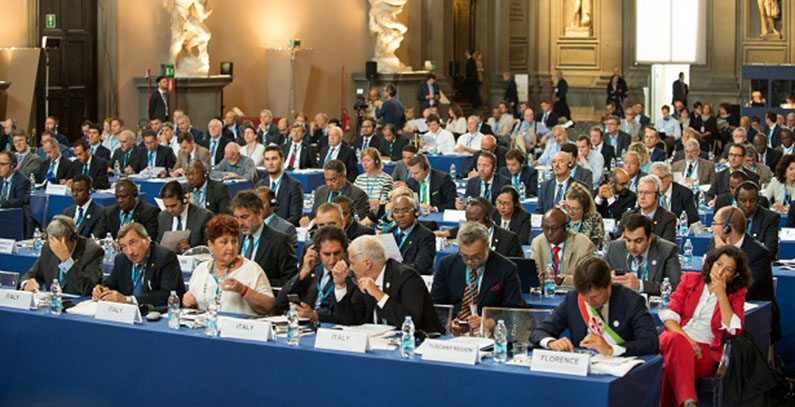
Photo: IRENA
42 countries and 29 partner institutions, members of the the Global Geothermal Alliance (GGA), have signed ‘Florence Declaration’ and agreed to work together to identify and implement measures that will significantly increase the speed of geothermal energy development around the world, following a milestone meeting between public and private leaders in Florence this week.
The meeting “Working Together to Promote Geothermal Energy Towards a Sustainable Energy Future” – the largest such meeting of ministerial representatives to discuss geothermal energy – was marked by the release of a new report “Geothermal power – Technology brief” from the International Renewable Energy Agency (IRENA), coordinator of the GGA.
“Conservative estimates set the technical potential for geothermal power production at 200 GW. This potential will only be released if emerging technologies such as enhanced geothermal systems continue to mature and enable access to resources that previously were inaccessible. The main barrier to further geothermal development lies in the difficult task of securing funding for surface exploration and drilling operations. This financial barrier can be addressed through public financing and the creation of public companies to exploit geothermal resources. Other barriers include environmental, social and administrative constraints”, report finds.
In 2016, the global geothermal installed capacity was 12.7 GW and capacity additions amounted to 901 megawatts (MW), the highest number in 10 years, which were installed in Kenya (518 MW), Turkey (197 MW) and Indonesia (95 MW).

The global technical potential for electricity generation from hydrothermal resources is estimated to be 240 GW, with a lower limit of 50 GW and an upper limit between 1 000 GW and 2 000 GW.
In 2015, geothermal power plants generated approximately 80.9 TWh, or approximately 0.3% of global electricity generation.
The report also looks into environmental, social and administrative barriers.
Environmental and social barriers lay in the environmental and social impact assessment. However, if managed in a timely and efficient manner, they do not present an obstacle.
Administrative barriers can be removed if governments ensure that their regulations establish a transparent and straightforward process that will foster the deployment of new projects.
The GGA meeting was attended by more than 200 high-level public, intergovernmental, non-governmental and senior private sector representatives committed to scaling up geothermal energy deployment worldwide.
The GGA aims to enhance multilateral efforts towards a more favourable environment to achieve a 500 per cent increase in global installed capacity for geothermal power generation and a 200 per cent increase in geothermal heating by 2030.


















Be the first one to comment on this article.